Anyone who knows me will tell you that my weak spot is whisk(e)y. Offer me a dram and we’ll be friends for life. Offer me a bottle and I’ll probably donate a kidney to your great aunt, Gertrude.
When it comes to whisk(e)y, most people tend to covet the single malts from Scotland, and many assume that’s what I prefer as well. They’re only half right. As far as whisk(e)y goes, I have two preferred regions. One of which is obviously Scotland, but the other is American. Specifically, bourbon whiskey.
We’ve covered bourbon in great detail, but today I’m going to focus on helping those new to whiskey develop an appreciation – nay – a love for the dram.
With the popularity of our Scotch Whisky for beginners article, I’d like to present you with our latest guide for novice whiskey drinkers with a focus on the great nectar America has to offer.
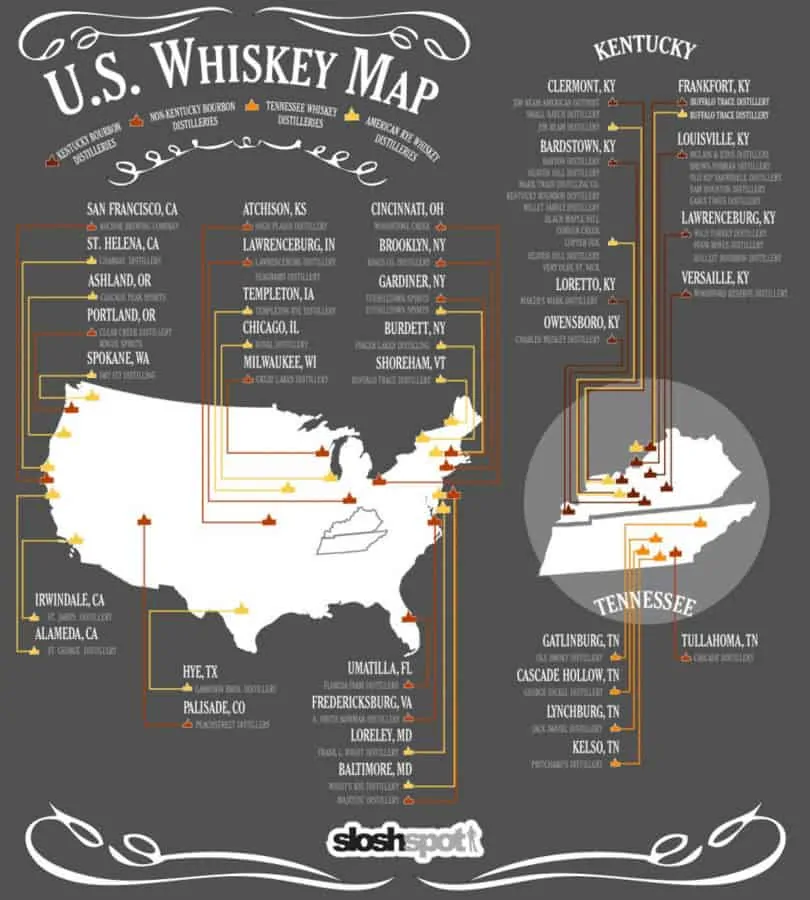
Types of American Whiskey
Bourbon whiskey is probably the most prominent of all American whiskey followed by Tennessee. However, the entire country has benefited from distilleries popping up everywhere from North Dakota to Utah, Texas to Washington. In fact, the craft whiskey industry has blossomed so much over recent years that it’s made the United States one of the most popular exporting regions in the world.
When it comes to American whiskey, they all have something in common, and that’s the type of grains used to produce them.
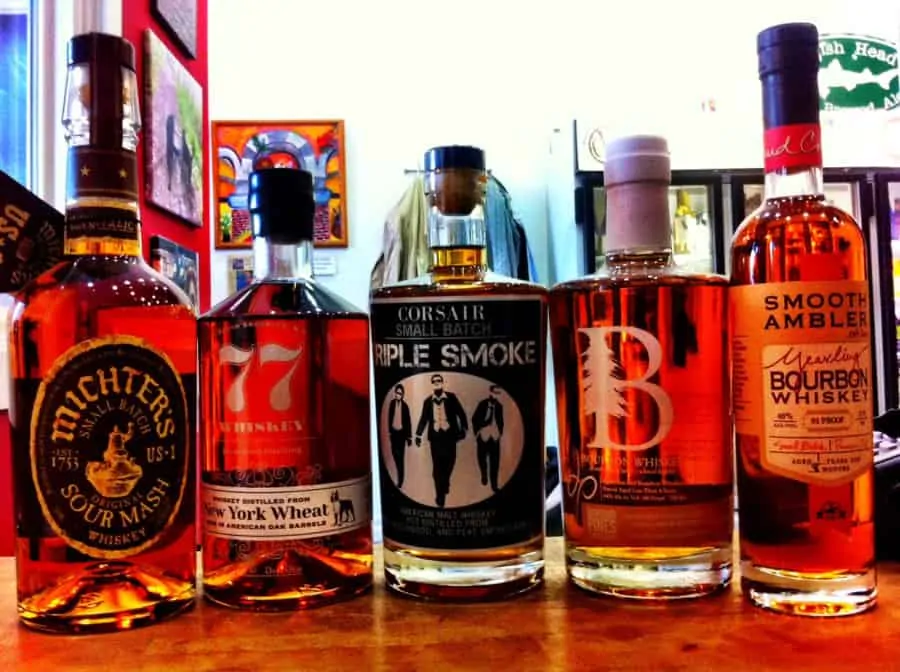
Bourbon Whiskey
Bourbon whiskey is arguably the most popular style of whiskey produced in the United States and accounts for the vast majority of American whiskey exported for sale. To learn more about Bourbon whiskey, be sure to read our in-depth guide by clicking here.
Malt Whiskey
Made from a mash of at least 51% malted barley, malt whiskey, US Federal Regulation requires the spirit to be distilled at a maximum 80% ABV with a fermented mash of at least 51% malted barley grain aged in charred new oak casks at under 62.5% ABV.
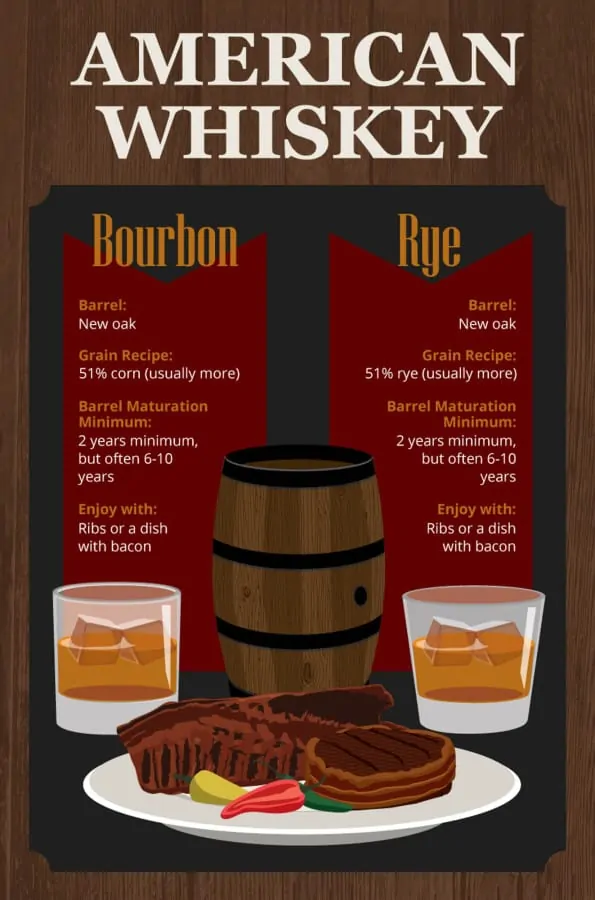
Rye Malt Whiskey
With a mash made of a minimum of 51% malted rye, this style of whiskey is often miscategorized as rye or malt whiskey but is actually quite different.
As the name suggests, it uses a malted rye grain, although if it has been aged for a minimum of two years, contains no added flavors or colors and hasn’t been blended with a neutral spirit or another type of whisky, according to US Federal Regulations, it can be named “straight malt whiskey”. It’s this unfortunate loophole that often confuses novice whiskey drinkers who think it’s the same as traditional malt whiskey that, of course, uses barley instead of rye.
Rye Whiskey
By law, American rye whiskey must be made from a mash of at least 51% rye and often a blend of corn or malted barley to make up the difference. It’s distilled to a maximum of 80% ABV and aged exclusively in charred, American oak casks at no more than 62.5% ABV. If it undergoes an aging process that lasts longer than two years, it can also be labeled as “straight rye whiskey”.
Rye has long been the most popular whiskey produced outside Bourbon County. It’s predominantly made in the Northeastern US with a large focus in Maryland and Pennsylvania according to US beverage industry statistics. In fact, by the dawn of the 1800s, distilleries in Pittsburgh were selling so much rye that it accounted for roughly half a cask for each person living in Allegheny County.
Once Prohibition hit, the rye whiskey industry pretty well dried up leaving just a handful of surviving distilleries. Today, most of the rye whiskey distilleries are based in Kentucky with smaller ‘craft’ distilleries spread across the whole of the United States. Typically rye is a spicier whiskey with stronger notes of fruit flavor than you’d find in other whiskeys such as Bourbon. Since Bourbon uses corn, it’s usually sweeter with a fuller mouthfeel than you’d find in a rye. For those who enjoy a smokier and spicier flavor profile, rye is well known for being the stronger of the bunch and therefore not a style of whiskey that I typically recommend to newcomers. However, for classic cocktails such as the Manhattan and the Old-Fashioned, rye is an excellent choice if you enjoy a drier drink.
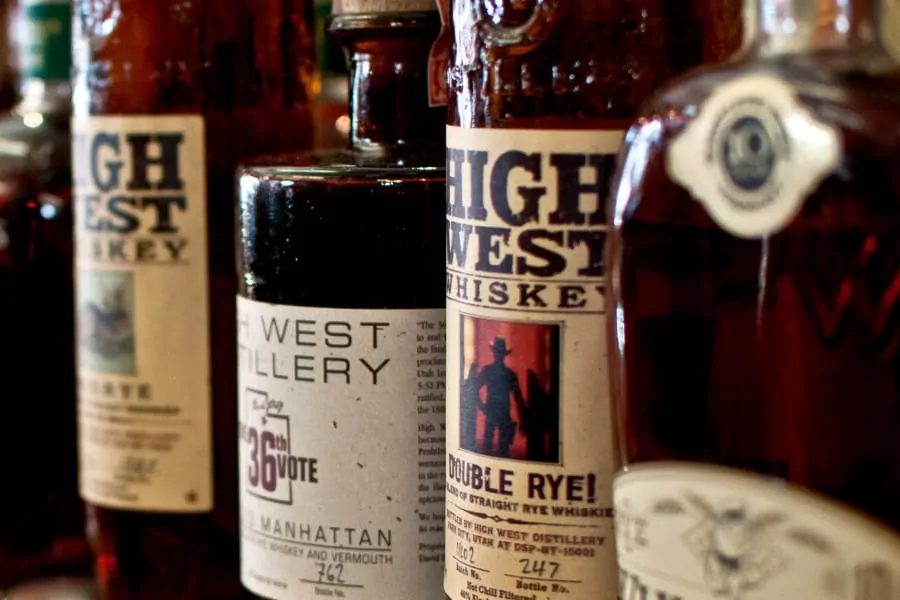
Corn Whiskey
The big difference between Bourbon (which is made with corn) and corn whiskey is the amount of corn required to produce it. With Bourbon distillers need to use a minimum of 51% maize whereas with corn whiskey they require a much larger 80%. Unlike moonshine, corn whiskey uses the more traditional mash production processes, yet generally is sold unaged making it distinct from other styles. Despite no requirement to age the whiskey, there are some distillers that choose to. If aging is performed, it must be done in uncharred or previously used American oak casks under 62.5% ABV. Even when distillers opt to age corn whiskey, it’s usually only done for a few months at the most. For the rare distiller that does age their corn whiskey past the two-year mark, they are given the unique ability to call it “Straight Corn Whiskey.”
Wheat Whiskey
Following the same laws as the other styles, wheat whiskey is made from a mash of at least 51% wheat grain. Most of the wheat whiskeys produced in the United States are from smaller, micro distilleries with very few larger brands producing them on a regular basis. Despite not being considered a legal “wheat whiskey,”, there are some of the bigger Bourbon brands that are wheated such as Maker’s Mark and the infamous Pappy Van Winkle.
Just like other whiskeys from the United States, a wheat whiskey that’s been aged for a minimum of two years in a new, charred oak cask can be labeled “Straight Wheat Whiskey”.
Blended Whiskey
A composition of whiskeys, blended whiskey, must be labeled without a specific grain bill designation unless it contains at least 51% of a single grain. Most small distilleries will opt to produce blended whiskeys since they have the ability to neutral spirits, coloring and flavor enhancers. Typically, these are the most unrefined whiskeys and ones I generally don’t recommend to anyone with an appreciation for whiskey.
Tennessee Whiskey
Next to Bourbon, Tennessee whiskey is probably the most prevalent. However, there are only four brands of actual Tennessee whiskey sold today.
Jack Daniels which is one of the most common and popular whiskies produced in the United States. As well as George Dickel, Collier and McKeel and Benjamin Prichard. Tennessee whiskey is actually recognized under the NAFTA agreement, but also on a more local level by Tennessee House Bill 1084 which was passed in 2013. Since most of the Tennessee whiskey produced today uses the Lincoln County Process that filters the whiskey through a thick layer of maple charcoal before it is put into casks for aging, this bill allowed an exemption for Prichard’s which doesn’t use the process to still be classified as Tennessee whiskey.
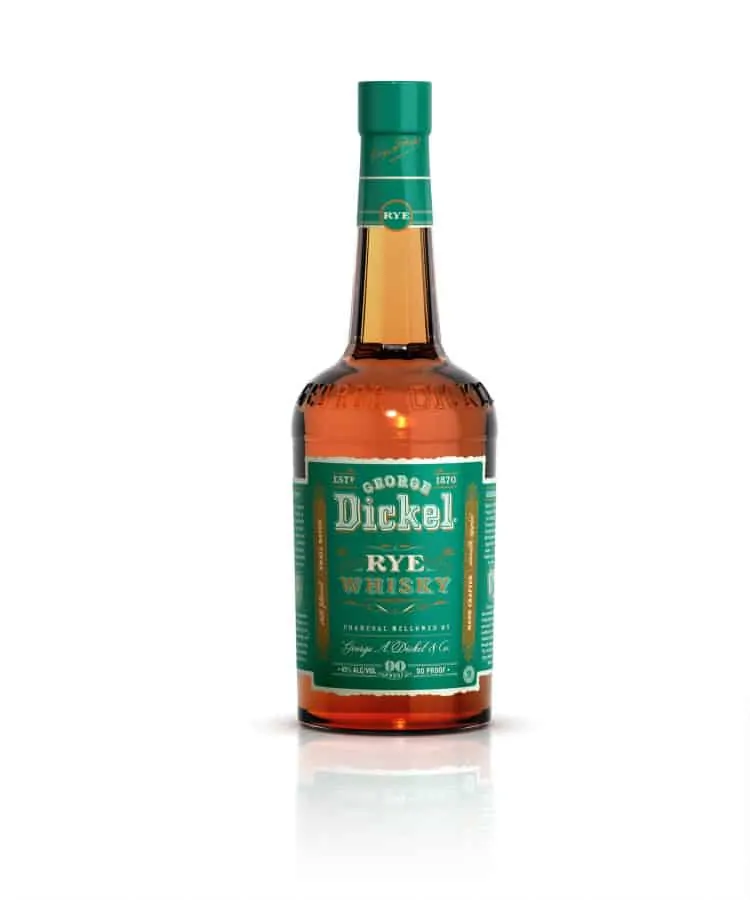
American Whiskey Distilleries
Today, of all the whiskey bottled and sold in the United States, more than 99% of it is made by just thirteen distilleries.
However, there are quite literally, hundreds, if not thousands of micro and craft distilleries popping up across every US State. Combine that with illegal trade of homemade moonshine and the US Whiskey industry is a powerhouse of profits.
The American whiskies that are the most prolific included Buffalo Trace, George Dickel, Booker Noe, Jim Beam, Barton, Four Roses, Maker’s Mark, Brown-Forman, Woodford Reserve, MGP Indiana, Heaven Hill, Wild Turkey, and Jack Daniels. However, there are many small batch and craft whiskies worth trying as well.
Selecting the Right Bottle
The first step in choosing a bottle of American whiskey, is to decide what you plan to use it for. Will you be drinking it neat or perhaps over ice, or will it be used in a cocktail? Of course, one of my favorite things to do with American whiskey is to cook with it.
Many people assume that it’s fine to use a single bottle for all purposes. Of course, to a certain extent that is true and if you’re not a big fan of whiskey, this might be the best bet for you. However, if you do enjoy the different flavor profiles of whiskey, it’s a wise idea to invest in a few different bottles.
As an example, for cooking I don’t like to waste my money on a more expensive bottle of whiskey. Therefore, instead of using a $200 bottle of Scotch, I’ll typically buy a bargain bin bottle of whiskey for $20 such as Jim Beam White Label. This way, I still impart many of the whiskey flavors without having to justify the money on liquor that is, in many cases, going to be reduced.
For cocktails, I usually prefer to use a mid-quality bottle. Why waste a bottle of Blanton’s Bourbon on an old fashioned when Maker’s Mark or Knob Creek will do just fine? I’ll choose my cocktail whiskey based on a few factors such as strength and flavors. If I want a spicier, more potent cocktail, I’ll opt for a rye whiskey or something bottled at cask strength like the Knob Creek 9 Year Single Barrel Reserve or Booker’s Bourbon. If I want a more elegant drink, I’ll choose a bottle like Woodford Reserve or Balcones.
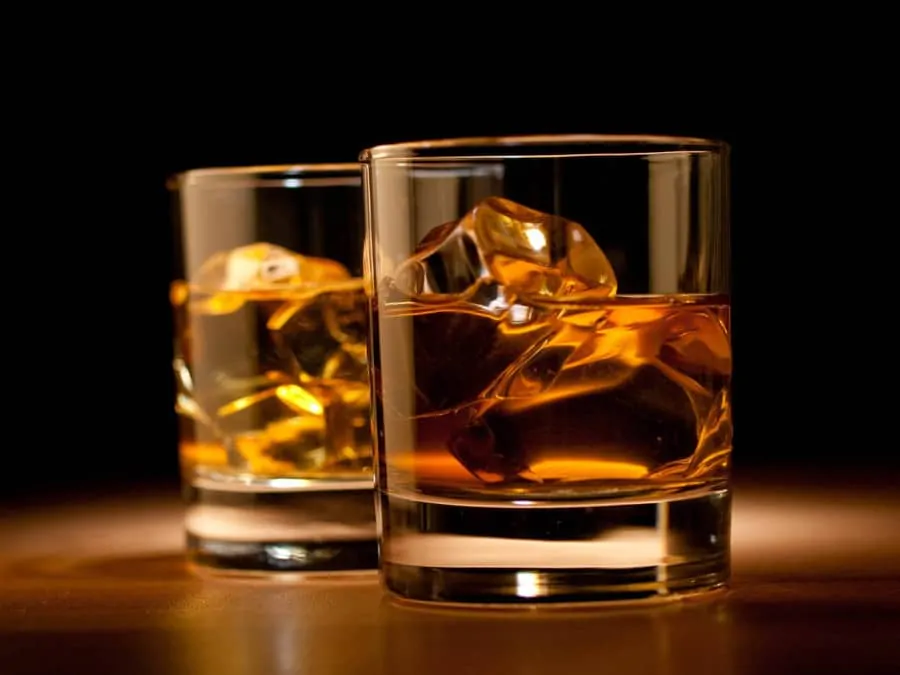
When it comes to enjoying whiskey neat – which is how I prefer it – I’ll opt for the higher quality American whiskies. Of course, I can find something good about almost any bottle, but my favorite American whiskey to drink straight is Blanton’s.
Selecting your bottle based on how you plan to consume it is one of the best ways to purchase whiskey made in the United States since the level of quality is so varied. The one benefit of American whiskey is that it’s generally far less expensive than many of the whiskies from Scotland. However, it also doesn’t offer the same consistency across the board. There are many US whiskies that resembled hooch made in the prison system, yet few that are as exquisite as other whiskies from Scotland, Ireland and Japan.
The biggest tip I can offer is don’t throw away a bottle. I’m often told by people that the bottle of Jim Beam they bought 5 years ago is just going to sit on the shelf forever. It doesn’t have to though. Instead, use it for cooking or offer it in a cocktail to those who don’t have the same appreciation as you do. There are many fruit forward cocktails that even the cheapest swill works well in because the flavor of the cocktail overpowers the alcohol. In my home we call it “grown-up juice”. Despite your disdain for some bottles of American whiskey you may have been gifted or purchased with regret, you can still find ways to use it. I probably have fifty or sixty bottles of whisk(e)y from all over the world in my bar right now. However, some of those include the bargain bin swill that I reserve for guests who won’t appreciate a 25 year old Scotch.
How do I drink a dram?
Drinking American whiskey is really no different than drinking Scotch. However, it usually offers a far different flavor profile.
Since American whiskey is so much less expensive and the quality differs dramatically, there really aren’t any hard and fast rules of how to drink it, in the way you find so many consume Scotch.
Obviously, for a finer American whiskey like Pappy Van Winkle, Blanton’s, Woodford Reserve or Balcones, it’s a good idea to abide by the standard rules of first trying it in a traditional manner; using a Glencairn or Copita nosing glass, no ice, and, if needed, just a drop of water to open it open.
However, I am not going to hold you to that the same way as I would if you had a dram of Scotch in my home with me. Feel free to throw in a few ice cubes, add some whiskey stones, put it in a fruity cocktail or guzzle it with cola. As far as American whiskey goes, there are no rules. But, isn’t that really the charm of it?
For details on how to properly taste a dram of whiskey, click here to read our Scotch Whisky Guide.
Otherwise, feel free to experiment and enjoy your glass of bourbon or rye they way you like it. I’ll be honest, I rarely buy American whiskey to drink by itself. I usually have it on hand for classic cocktails, fruitier drinks I serve to my wife and friends as well as for cooking or baking with. There’s nothing better than a Bourbon butter sauce for the meat that you’ve had sitting on the grill all day long. Heck, American whiskey is even great in homemade ice cream. Screw the rules and just enjoy it.
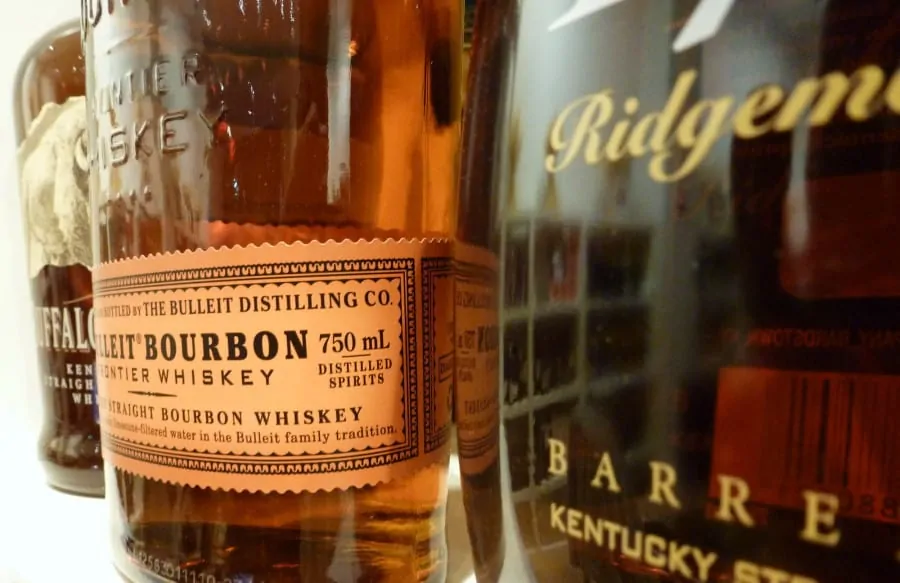
Recommended Whiskies
Here’s a few whiskies you might want to try.
Low Quality (for cooking, baking and those guests you secretly don’t like)
Bernheim Original
One of the few wheat whiskies still produced in the United States, Bernheim Original is basically the Budweiser of whiskey. It’s great if you enjoy wheat whiskey, but it’s even better when used to cook with.
Jim Beam Devil’s Cut
A horrendous whiskey to drink straight, Devil’s Cut is basically fire in your mouth. Primarily consumed by raging alcoholics and those without taste, it’s actually one whiskey that works shockingly well in bold barbecue sauces and mops. Give it a try.
Jim Beam White Label
The world’s most popular whiskey and in my opinion, one of the worst, Jim Beam White Label is the stuff you drank in college. However, it works very well in just about any recipe.
Bulleit Rye
While I’m not a fan of the classic Bulleit Bourbon, as far as smoky rye goes, this one is worth its weight in a cocktail. If you like a stronger, smokier rye this is a great option.
Medium Quality (for cocktails, cooking and serving guests without an appreciation for fine whiskey)
Maker’s Mark
An American staple, Maker’s Mark is a great option for just about any cocktail that needs a slightly sweeter, yet somewhat spicy whiskey in it. It’s a wheated whiskey which really makes it a nice change from the classic whiskeys and I really enjoy it in summer cocktails and newer, trendier drinks you can find local mixologists whipping up. I would avoid it, however, in classics like the old fashioned or Manhattan.
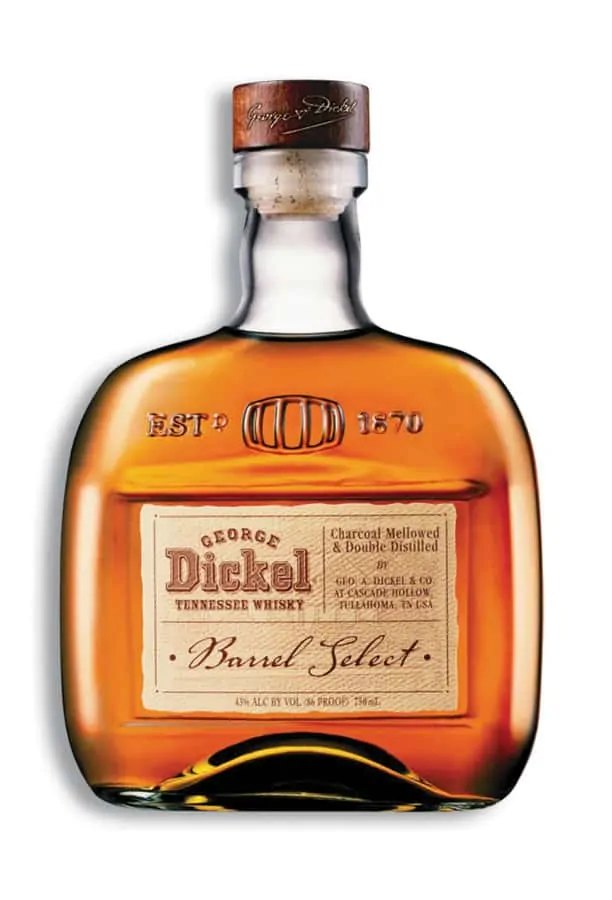
George Dickel
A class act, George Dickel whiskeys are a great mid-range drink. The rye is one of the best you’ll find and a great addition to any cocktail. The rest of range isn’t that bad either. A classic whiskey for the manliest of men.
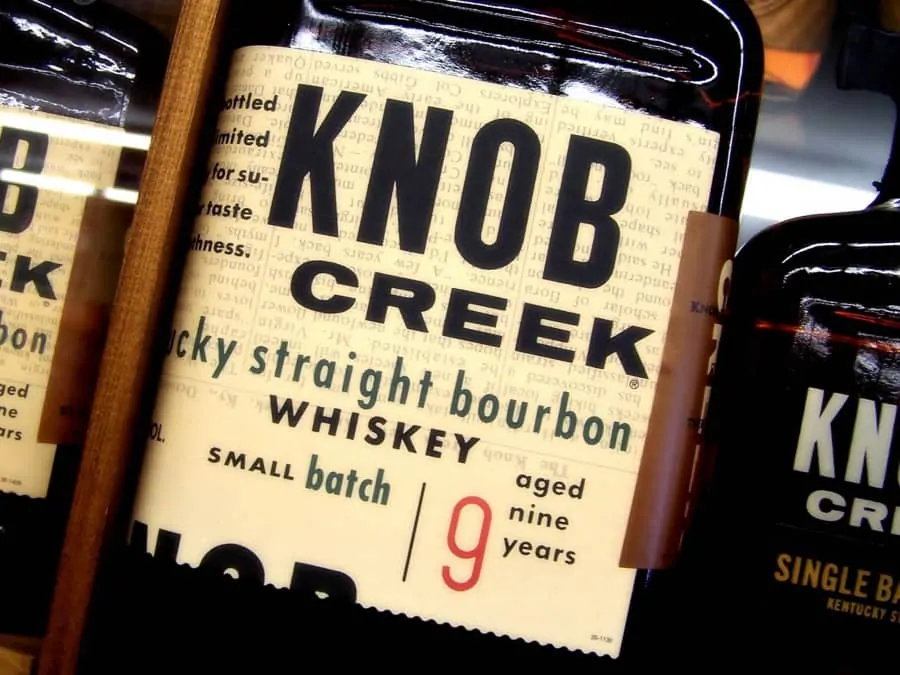
Knob Creek
The entire range is rather good, although I really enjoy the strength of the 9 Year Single Barrel Reserve. It works really well in classic cocktails but can also be used for great recipes as well as consumed straight after a hard day at work.
High Quality (For sipping straight or over stones)
Blanton’s Bourbon
My favorite bourbon next to some of the older stuff no longer available, Blanton’s is my go-to daily drink at the office. Typically, at home I’ll enjoy a dram of Scotch in the evening, but if I want a mid-day drink at work, I actually prefer a nice bottle of Bourbon and you can almost always find Blanton’s in my bar. Elegant and creamy, yet spicy and abrupt, Blanton’s has the perfect blend of tobacco, leather, citrus and vanilla that most Bourbon drinkers really love. I highly recommend it to anyone with a refined palate.
Basil Hayden
A rather wonderful whiskey, it’s considered a small batch Bourbon produced by the Jim Beam distillery. What I like about it is that it’s a less potent, yet equally fine whiskey compared to any fine bourbon. It’s unique with notes of peppermint and offers one of the most elegant finishes you can imagine.
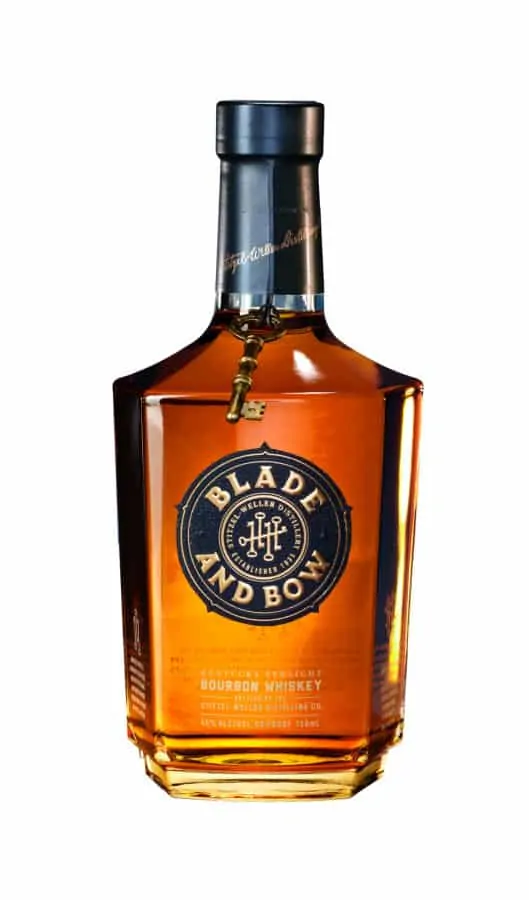
Blade & Bow
From the distillery that brought us Pappy Van Winkle, Blade & Bow Bourbon is an award-winning monster of a delightful dram. I especially recommend the 22-year but the Kentucky Straight is also quite wonderful.
The IW Harper 15 Year IW Harper Whiskey
I.W. Harper
Back in the 1800s, I.W. Harper was about as big as it gets when we talk American whiskey. However, most people haven’t heard of it because for the last twenty years, it hasn’t been stocked anywhere but in Japan. A full-flavored whiskey, it’s really one worth trying and a great dram by itself or mixed in a classic cocktail.
Woodford Reserve
This could probably fit in the medium quality range, but as far as classic American whiskey goes, Woodford Reserve is hard to beat. Really sumptuous and creamy, it has beautiful notes of cedar, lemon and toasted nuts that are harmoniously paired with baked apple, vanilla and brown sugar. Consumed neat or in a cocktail, it’s a tough whiskey to beat.
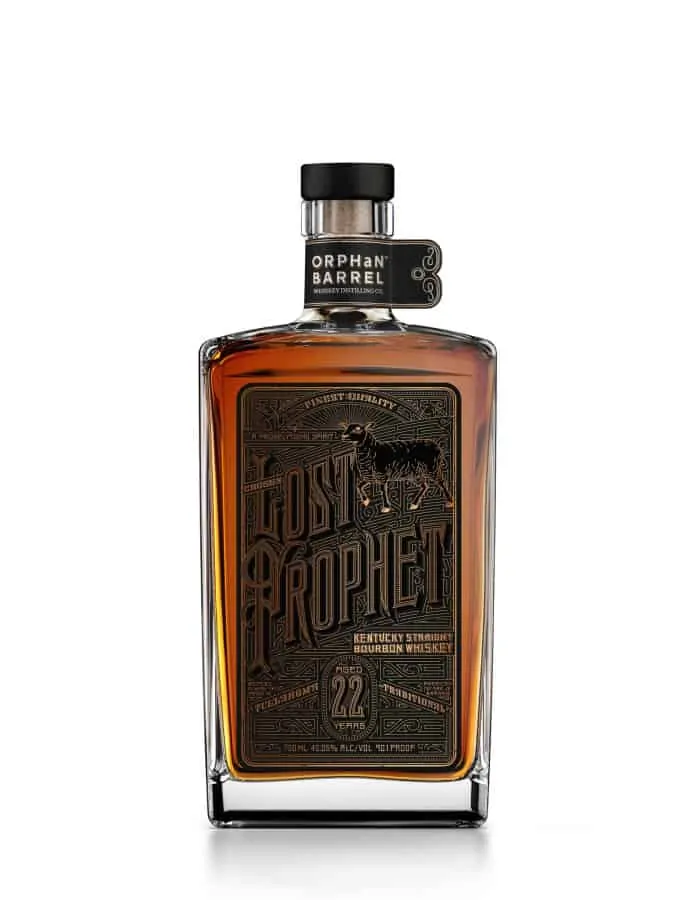
Orphan Barrel Lost Prophet
At 22 years old, this limited edition whiskey is in high demand. Once gone, it will be gone forever. Orphan Barrel whiskeys, in general, are quite remarkable, but this one is a step above the rest. One of the finest whiskeys I’ve ever had, it beats out Pappy Van Winkle 23 in a heart beat and has such an elegant and smooth flavor profile you’d think you were drinking a fine Scotch. Another one worth trying is the more readily available Forged Oak or the out of existence Old Blowhard that is worth your savings if you can find it anywhere.
Recommended Products
I almost never recommend accessories for Scotch, but when it comes to American whiskey, it’s a wise idea to have a few of these on hand. Even if it’s not for you, it might be useful for your guests.
| Product | Description | Approx. Price |
|---|---|---|
| Ice Ball Mold | Ice balls melt slower than cubes and are great for cooling your cocktail without watering it down as quickly. | $$ |
| Glencairn Glasses | The official whisky glass, the Glencairn is shaped to allow for the ideal tasting of whiskies. | $ |
| Copita Nosing Glasses | My chosen glass for drinking whiskey, the Copita offers a longer stem than the Glencairn ensuring your hand doesn’t warm the spirit. | $ |
| Whiskey Stones | Made of stone, you pop these in your freezer to chill your drink without watering it down. Best of all, they’re reusable. | $$ |
| Whiskey Decanter | A whiskey decanter is a great way to store your spirit in a more elegant fashion than simply the bottle. | $$$ |
| Rocks Glass | Rocks glasses are the most common and popular glass for serving whiskey in. Despite not using them myself, I always have them on hand for those who want one. | $ |
| Jim Murray’s Whisky Bible 2015 | The actual bible for whisky connoisseurs, this annual handbook is a complete list of the world’s best whiskies and a must-have for any enthusiast. | $ |
| American Whiskey, Bourbon & Rye: A Guide to the Nation’s Favorite Spirit | This book by Clay Risen is a great introduction to American whiskey and one that will give you a complete understanding of what to look for when buying a new bottle. | $ |
Conclusion
There are so many American whiskies to choose from and many others I would recommend. Of course, Pappy Van Winkle should always be a go-to when you can find it and if budget allows. Not just because it’s so rare and coveted but, well, yeah that’s pretty much it. It’s good but you’ll be let down if you’re expecting perfection. Regardless of what whiskey you choose, American whiskey is the everyman’s spirit and one that can be enjoyed in a number of ways without offending others. It’s all about being rebellious, masculine and patriotic and if you enjoy whisk(e)y of any kind, American will offer you one of the largest ranges in quality and price to choose from.
(Some whiskeys were provided to us by Beam Suntory and Diageo)
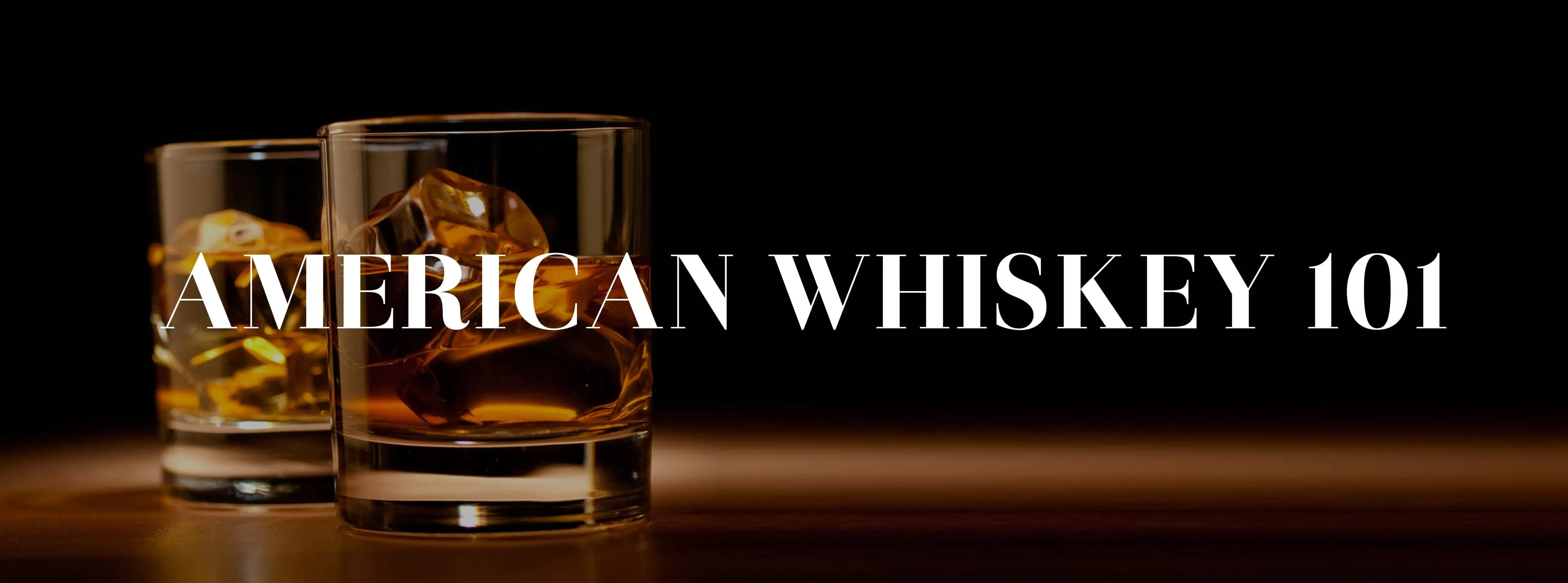
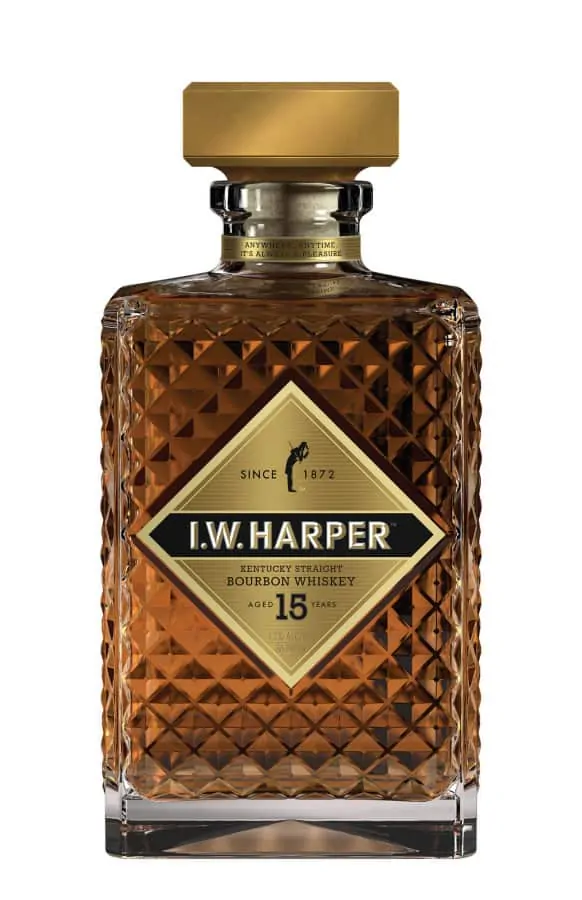
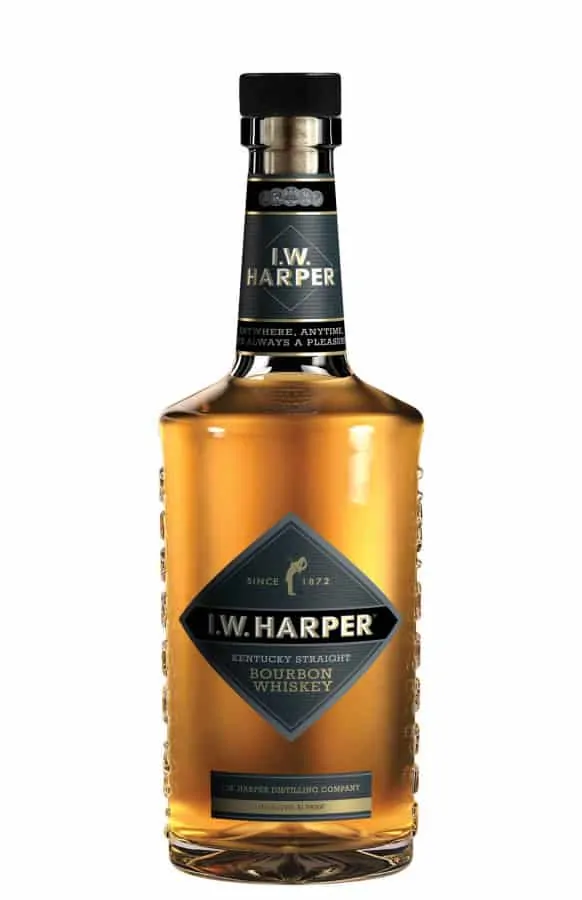
AAHH !!
So much whisky so little time .